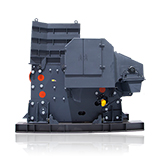Strategies for Improving Gold Recovery Rate and Reducing Losses
Gold recovery is a critical process in the mining and metallurgy industries, where maximizing the extraction of gold from ore is a fundamental economic consideration. Gold, often found in minute quantities in ores, presents numerous challenges in terms of efficient recovery. As the gold market becomes more competitive, the importance of improving gold recovery rates and minimizing losses becomes increasingly paramount.
The primary goal in gold extraction is to efficiently separate gold from other materials, using various physical and chemical processes. However, inefficiencies in recovery methods can lead to substantial losses, impacting both operational costs and overall profitability. This article discusses a range of strategies for improving gold recovery rates while minimizing losses in the extraction process, from better ore handling techniques to advanced recovery methods and technology.

1. Optimizing Ore Preparation and Crushing
a) Crushing Efficiency
Ore preparation and crushing are crucial steps in the gold extraction process. The efficiency of the crushing process directly impacts the subsequent recovery stages, especially in terms of achieving an optimal particle size for further processing.
Strategy:
- Use of High-Efficiency Crushers: Crushers such as jaw crushers, cone crushers, and impact crushers should be selected based on the hardness and abrasiveness of the ore. Employing high-efficiency crushers that minimize the generation of fines and provide uniform size reduction is key to improving recovery.
- Optimizing Crusher Settings: Ensuring that crushers are set to produce the appropriate particle size, without excessive fines, can prevent losses during flotation, leaching, or other recovery processes.
- Pre-concentration of Ore: Using pre-concentration techniques, such as gravity separation or flotation, can reduce the amount of material entering the mill, lowering energy consumption and improving the overall recovery rate.
2. Leaching Process Enhancement
Leaching is a common method for extracting gold from its ores, particularly in low-grade deposits. The most widely used leaching method is cyanidation, where cyanide is employed to dissolve gold into a solution. However, inefficiencies in the leaching process can result in significant gold losses.
a) Optimizing Cyanide Concentration
The cyanide concentration in the leach solution must be carefully controlled to maximize gold recovery. Insufficient cyanide will result in incomplete dissolution of the gold, while excessive cyanide can increase environmental risks and operational costs.
Strategy:
- Cyanide Leaching Optimization: Conduct regular testing to monitor cyanide concentration and make adjustments as needed based on the mineralogical composition of the ore. The use of cyanide destruction techniques can also help mitigate environmental impact while maintaining optimal recovery rates.
- Oxygen and pH Control: Oxygen is crucial for cyanidation, as it accelerates the dissolution of gold. Ensuring sufficient oxygenation in the leach tanks, along with careful pH control, can improve gold recovery efficiency.
b) Leaching Time and Temperature
Gold extraction can be highly sensitive to the time and temperature at which leaching occurs. Leaching time should be optimized based on ore characteristics to prevent the overuse of reagents and reduce costs. Temperature control in leaching tanks also speeds up the reaction, enhancing recovery.
Strategy:
- Temperature Control: Higher temperatures generally increase the solubility of gold in cyanide solutions. However, this should be carefully balanced to avoid high reagent consumption.
- Controlled Leaching Time: Gold recovery can be significantly improved by adjusting the leaching time to ensure the full dissolution of gold without excessive cyanide use.
3. Improved Gravity Separation Techniques
Gravity separation is a widely used method for extracting free gold and other heavy minerals. It relies on differences in the specific gravity of gold compared to surrounding gangue materials.
a) Gravity Concentrators
Advanced gravity concentrators such as Knelson concentrators, Falcon concentrators, and shaking tables can be employed to recover fine gold particles that may be lost in other recovery processes.
Strategy:
- Optimizing Gravity Concentration: Utilizing modern concentrators that offer high recovery rates for fine and coarse gold can significantly reduce gold losses. Ensuring that the equipment is properly calibrated and optimized for the ore type will maximize the amount of gold recovered.
- Multiple Stages of Gravity Separation: Implementing multiple stages of gravity separation—such as primary concentration followed by cleaning stages—can significantly improve recovery, especially for ores containing fine gold particles.
b) Coarse Gold Recovery
Many gold deposits contain a high percentage of coarse gold, which can be easily recovered through gravity techniques.
Strategy:
- Use of Coarse Gold Gravity Separation: Concentrators like Knelson or Falcon are effective for coarse gold recovery. By maximizing the capture of larger gold particles in the early stages, this can significantly boost the overall recovery rate.
4. Flotation Process Optimization
Flotation is another key method for gold recovery, particularly for ores with significant amounts of sulfide minerals. This process uses chemical reagents to separate valuable minerals from gangue.
a) Reagent Selection
The selection of reagents is a crucial factor in optimizing flotation efficiency and improving gold recovery. Collectors, frothers, and depressants must be chosen based on the ore composition.
Strategy:
- Customizing Reagents for Ore Type: For sulfide gold ores, using appropriate collectors (such as xanthates or dithiophosphates) and frothers can improve gold recovery. Tailoring the flotation circuit to the ore type will help to minimize gold losses.
- Flotation Circuit Design: The design of the flotation circuit, including the number of stages and the flow rate of slurry, must be optimized for the specific ore to improve recovery rates. This includes controlling the pH, adjusting air flow, and optimizing froth height.
b) Froth Flotation Optimization
Improper froth flotation conditions can result in gold being lost in tailings. Adjusting flotation parameters, including the flotation cell size and the density of the slurry, can help to optimize recovery.
Strategy:
Optimizing Froth Stability: Ensuring that froth is stable and sufficiently aerated will increase gold recovery. Excessive aeration can cause fine gold particles to be carried over into the tailings, while insufficient aeration can lead to poor separation.
Tailings Management: Handling flotation tailings carefully and monitoring for gold content in the tailings can help to identify recovery issues and minimize losses.
5. Advanced Technologies for Gold Recovery
Emerging technologies and innovations continue to improve gold recovery processes. These technologies can enhance the efficiency of traditional methods or offer entirely new avenues for recovery.
a) Bioleaching
Bioleaching involves using bacteria or other microorganisms to extract gold from ores. This process has been shown to be effective for refractory ores that are difficult to treat with traditional cyanidation.
Strategy:
- Implementing Bioleaching for Refractory Ores: By using bioleaching for ores containing gold that is locked in sulfides or other refractory minerals, operators can enhance recovery and reduce losses in refractory gold ores.
b) Pressure Oxidation
Pressure oxidation is a high-temperature, high-pressure method for treating refractory gold ores. It is particularly effective at oxidizing sulfide minerals, thereby releasing gold for subsequent recovery.
Strategy:
- Applying Pressure Oxidation: This method can help extract gold from ores that are otherwise difficult to treat by conventional methods like cyanidation, particularly in ores containing pyrite or arsenopyrite.
6. Tailings and Environmental Considerations
The proper management of tailings is essential not only for maximizing gold recovery but also for meeting environmental and safety standards.
a) Tailings Treatment and Reprocessing
Gold losses in tailings represent a significant opportunity for improvement in recovery. Advanced tailings reprocessing methods can help recover gold that was previously considered uneconomical.
Strategy:
- Reprocessing of Tailings: Using gravity concentrators or flotation circuits to reprocess tailings from earlier stages of recovery can lead to increased gold recovery.
- Environmental Impact: Ensure that tailings disposal does not negatively impact the environment. Utilizing sustainable practices such as tailings thickening and filtering can reduce the environmental footprint of gold recovery operations.
Improving the gold recovery rate and reducing losses is a multifaceted challenge that requires a combination of optimized processes, advanced technologies, and careful operational management. By focusing on key areas such as ore preparation, leaching optimization, gravity separation, flotation, and embracing cutting-edge technologies, gold recovery can be significantly improved.
Additionally, focusing on sustainable practices, including the reprocessing of tailings and careful reagent management, can help minimize both operational losses and environmental impact. The combination of these strategies will not only improve the recovery rate but also reduce costs and increase the overall profitability of gold mining operations.






